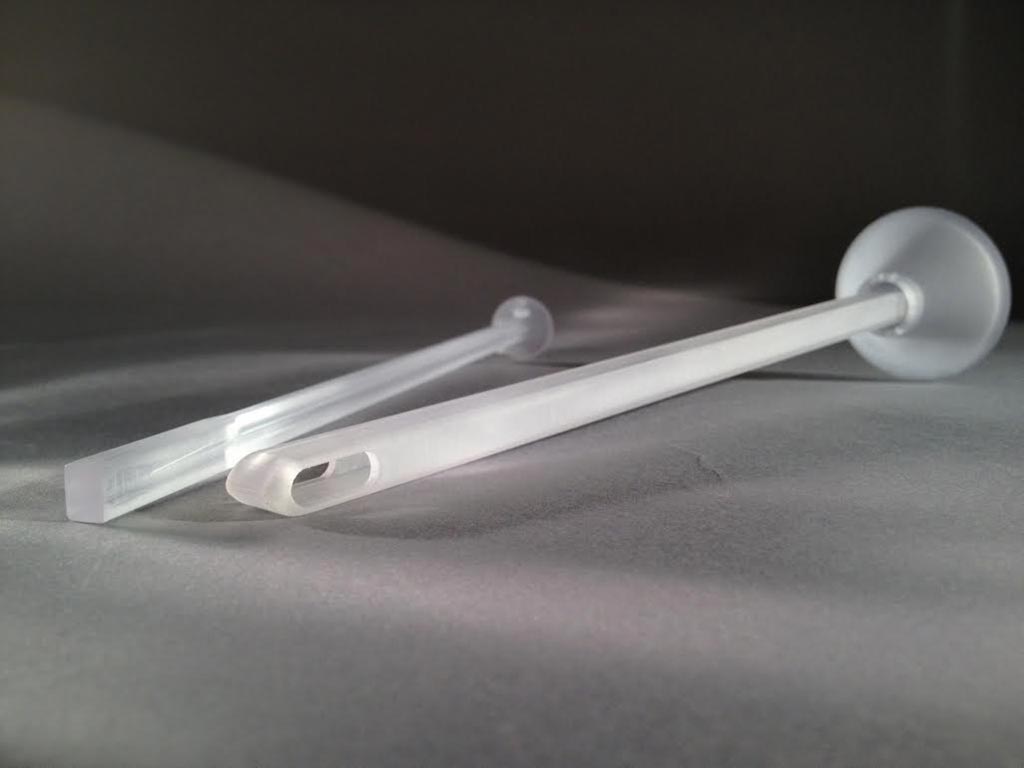Spine Graft Delivery Tool Reduces Surgical Guesswork
By HospiMedica International staff writers
Posted on 24 Jan 2018
A new spinal bone graft delivery tool facilitates less-invasive procedures and improved outcomes for patients, surgeons, hospitals, and payers.Posted on 24 Jan 2018
The Kleiner Device Labs (Incline Village, CA, USA) KG 1 graft delivery tool includes a cannula, plunger, and a detachable funnel that facilitates easier loading of graft material. The device’s unique shape allows easier entry into the disk interspace, minimizing soft tissue damage or irritation. A bi-portal design ejects graft material to fill both sides of the disk space, while leaving a central void for the insertion of a fusion cage. The rectangular cross-section of the device is twice that of a round 8 mm cannula, which improves the flow characteristics of bone graft material by 40%.

Image: The KG 1 spinal bone graft delivery tool reduces spinal fusion failure rates (Photo courtesy of Kleiner Device Labs).
The KG 1 is made of Lexan, a polycarbonate resin thermoplastic material that can undergo significant deformation without cracking of breaking, with an impact strength 250 times greater than that of glass and 30 times greater than that of acrylic. The disposable device is delivered with the plunger pre-assembled, guaranteeing sterility of the instrument and eliminating the system costs of cleaning and restocking. The KG 1 has been approved by the U.S. Food and Drug Administration (FDA).
“In my own surgical practice, I was frustrated by unacceptable failure rates in spinal fusions and bad outcomes for my patients that were driven by existing graft delivery tools that jam, don't distribute graft material to the right locations or quantity, or required excessive manipulation that creates soft tissue inflammation or damage,” said Jeff Kleiner, MD, founder and CEO of Kleiner Device Labs. “In testing, we found that the KG 1's design solves all these problems, and use of the new tool alone improved my spinal arthrodesis rate from 75% to 92%.”
“The delivery device has been very simple and easy to use and I have used it for both minimally invasive as well as in open applications. It has been particularly helpful for me in the minimally invasive fusions we do, greatly increasing the amount of bone graft material that I have been able to get into the interspace,” said Michael Rauzzino, MD, of Front Range Spine and Neurosurgery (Denver, CO, USA). “I have also found it extremely helpful for our minimally invasive lateral approaches to the spine where due to the depth of the wound and the anatomy, it was difficult to get a good deal of bone graft into the interspace.”
Related Links:
Kleiner Device Labs














